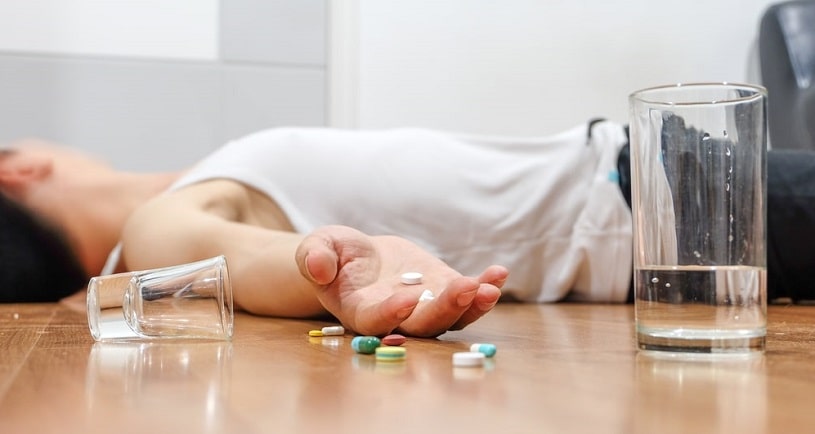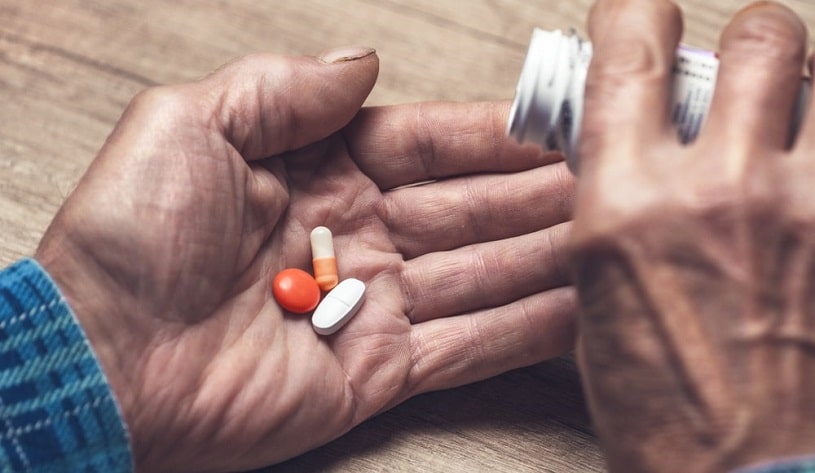Can you overdose on Meloxicam? Yes, it is possible. For the most part, Meloxicam is safe to consume for treatment, granted that the patient sticks to their prescription. However, if they don’t use it as their prescription states, they could potentially overdose on it. The symptoms of an OD may appear suddenly, which is why it’s important that the patient has all the necessary information about ODs and knows what to look out for, so their life can be saved as fast as possible.
Table Of Contents:
Can You Overdose on Meloxicam?
Mobic isn’t the standard run-of-the-mill pain-killing medication or opioid, making it slightly safer for health than most drugs. But that doesn’t mean that it’s entirely safe for health to consume without bounds.
This drug, like other NSAIDs, might be less potent than an opioid. However, it’s still potent enough to help patients deal with pain. Since it’s an anti-inflammatory drug, it is still possible that the patient can OD if they aren’t careful when they’re taking it. They should have information about the drug’s safety and information about overdoses while using the medicine.

Although there are still minimal studies and information on Mobic NSAIDs overdoses, they are possible. Four cases have been recorded so far where the patient had taken more of the drug than they were prescribed, and although only one of them was in a severe condition, they had all suffered damage to the GI tract; however, they all recovered.
However, they all received medical attention fairly quickly, so the OD symptoms could be controlled, and they could be nursed back to health. That may not be the case for someone that doesn’t manage to get medical attention right away. Even though the medication appears as a “harmless” anti-inflammatory drug, things can worsen significantly if the prescription isn’t followed.
Meloxicam Overdose Amount
Physicians tend to prescribe a person Meloxicam medication at the lowest dose possible that yields effective results in alleviating the individual’s pain and inflammation. In most cases, this would be a daily use of 5-7.5 mg dosage of the drugs. It reduces the risk of OD.
When the individual does not experience significant help in relieving pain or the other symptoms they’ve been dealing with, the physician may increase the drug to a maximum of 15 mg.
The maximum daily dose of Meloxicam for adult patients is 15 mg. However, it is possible that the patient ends up experiencing an NSAIDs OD without everyday use or one-time use of 15 mg of drugs; the amount of this drug the patient can safely consume depends on their body composition and their tolerance. Effects of an OD because of the drugs may appear unexpectedly too.

That is because Meloxicam can end up affecting the heart, regardless of whether they have pre-existing heart conditions. It may still cause heart failure or GI tract problems such as intestinal bleeding even if they had no prior history of the disease. The risk is higher for patients with pre-existing heart conditions or who are predisposed to GI problems. That is why the physician in charge will try to get them alternative medication first, but if they have to use Mobic, they should be monitored closely for any overdose symptoms.
Mobic Overdose Symptoms
It is important to consider the symptoms presented in a patient when they have taken a Meloxicam overdose amount (anywhere over 15 mg). First, it is crucial to understand the effects that the drug has on the body can be significantly elevated. For example, NSAIDs like Mobic can raise blood pressure, and those with pre-existing hypertension may experience an unhealthy spike in their blood pressure levels.
Another factor to be taken into account is drug interactions Meloxicam has been associated with. Taking Mobic together with those drugs can cause even more severe symptoms to develop.
In the Majority of Cases, When an Individual Overdoses on Mobic, They Would Experience the Following Symptoms:
- Nausea
- Vomiting
- Drowsiness
- Epigastric pain
- Lethargy
There are some cases where symptoms can become more severe. Some patients may experience gastrointestinal bleeding.
In a Patient Who Develops Poisoning as a Result of the Mobic Overdose, the Following Symptoms May Also Develop:
- Acute renal failure
- Coma
- Convulsions
- Respiratory depression
- Hepatic dysfunction
- Hypertension
- Cardiovascular collapse
- Cardiac arrest
The half-life of Meloxicam also needs to be taken into account here to consider how long it would take the body to expose the medication. The half-life of the drug is considered to be 20 hours on average.
Individuals who think that a glass of wine is okay with Meloxicam should understand that alcohol is not advisable when this particular drug is used, especially when taking more than the initial amount of Mobic. Such a combination can significantly aggravate the Meloxicam side effects. It’s essential to seek help immediately when any of the OD symptoms appear to have the lowest risk of death possible.
Meloxicam Overdose Death
Since Meloxicam overdose is linked with cardiovascular and extreme GI tract complications, the FDA has added a black box warning to the drug. Even if the patient wasn’t predisposed to cardiovascular or GI tract conditions, they could still experience fatal effects while using this drug. That is why it’s recommended that a close eye is kept while the patient is using the medicine. The lowest dose should be used for the shortest amount of time possible.

Other than the four extreme cases mentioned above, there haven’t been many studies that study the possibility of death because of Meloxicam in humans, although limited testing has been done on animals to check the safety.
Studies testing the drug’s safety in humans have found that as long as the patient gets medical treatment to stop the overdose symptoms, Meloxicam overdose death can be avoided.
Meloxicam Overdose Treatment
Without prompt treatment, the development of poisoning can rarely lead to a Meloxicam overdose death. Even though patients might think it’s okay to take more of the anti-inflammatory drug than stated in the prescription, it isn’t. That is why individuals are advised to understand how an overdose on the medication should be treated. If a patient takes more medicine than prescribed and any OD symptoms appear, a call to the emergency is the right step to take.
If the prescribed dose doesn’t seem to be effective anymore, a patient should call their physician, explain that the prescribed dose does not seem to be working for them, and ask permission to increase the daily amount.
Can Meloxicam Overdose be Managed at Home?
Home-based treatment, apart from supportive care while awaiting a medical team, is not advised. Gastric lavage is the preferred initial treatment for an overdose on Meloxicam. Once gastric lavage has been performed, the patient should be provided with activated charcoal. It is essential to seek medical assistance soon after the overdose occurs.
In cases where the drug has already entered the person’s bloodstream, a dose of Cholestyramine may be advisable. This medication has been shown to cause the Meloxicam chemical to be expelled from the body faster than usual. Overdose can be dangerous, and if it happens, professional Mobic withdrawal assistance is advised. If one noticed any signs of abusing Meloxicam, an OD happened, it is necessary to look for drug addiction treatment at a professional rehabilitation facility.
Hope Without Commitment
Find the best treatment options. Call our free and confidential helpline
Most private insurances accepted
Page Sources
- Zeidler, H., Kaltwasser, J. P., Leonard, J. P., Kohlmann, T., Sigmund, R., Degner, F., & Hettich, M. (2002). Prescription and tolerability of Meloxicam in day-to-day practice: postmarketing observational cohort study of 13,307 patients in Germany. Journal of clinical rheumatology : practical reports on rheumatic & musculoskeletal diseases, 8(6), 305–315. https://pubmed.ncbi.nlm.nih.gov/17041399/
- United States Food and Drug Administration. Mobic. Prescribing Information https://www.accessdata.fda.gov/drugsatfda_docs/label/2012/020938s022lbl.pdf
- Howes L. G. (2007). Selective COX-2 inhibitors, NSAIDs and cardiovascular events - is celecoxib the safest choice?. Therapeutics and clinical risk management, 3(5), 831–845. https://www.ncbi.nlm.nih.gov/pmc/articles/PMC2376081/
- Bergese, S. D., Melson, T. I., Candiotti, K. A., Ayad, S. S., Mack, R. J., McCallum, S. W., Du, W., Gomez, A., & Marcet, J. E. (2019). A Phase 3, Randomized, Placebo-Controlled Evaluation of the Safety of Intravenous Meloxicam Following Major Surgery. Clinical pharmacology in drug development, 8(8), 1062–1072. https://www.ncbi.nlm.nih.gov/pmc/articles/PMC6899482/
- Lehr, T., Staab, A., Tillmann, C., Trommeshauser, D., Schaefer, H. G., & Kloft, C. (2009). A quantitative enterohepatic circulation model: development and evaluation with tesofensine and Meloxicam. Clinical pharmacokinetics, 48(8), 529–542. https://pubmed.ncbi.nlm.nih.gov/19705923/

 Authored by
Authored by  Reviewed by
Reviewed by 
